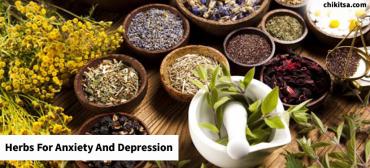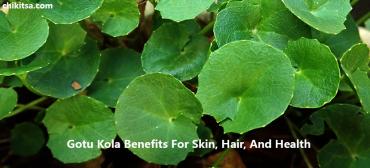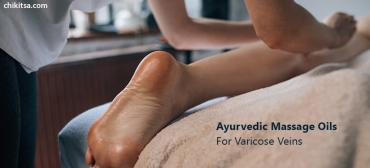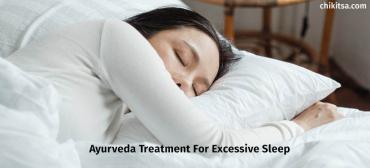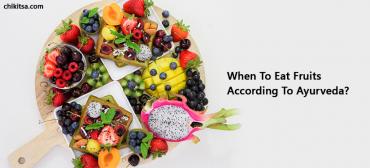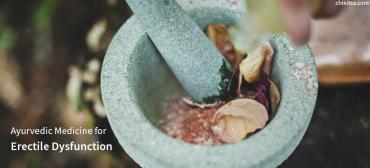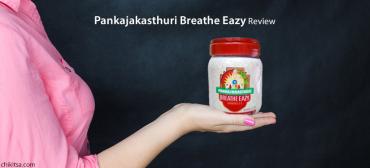Panchakarma Or Cleansing Therapies - Samshodhan

Instead of subduing the vitiated doshas, this Ayurveda therapy expels Doshas out of the body and thus restores the health. This therapy includes five procedures known as Panchkarma which are as follows:
1. Vaman Induced Emesis
2. Virechan Induced purgation
3. Niruhabasti Enema given by using decoctions
4. Anuvasanbasti Enema given by using medicated oils
5. Shirovirechan or Nasya Nasal insufflations
Sushruta has also included bloodletting or Raktamokshan in Panchakarma.
POORVA KARMA (Preparatory Procedures)
Before any of these Panchakarma Chikitsa is started, there are two procedures which are to be employed, namely Snehan (Oleation therapy) and Swedan (diaphoresis).
Material used for oleation therapy is of two types.
1. Material from plants includes castor oil and sesame oil and other oils.
2. Material from animals includes Ghee, animal fats and marrow.
Procedure
A certain amount of ghrita or sesame oil is given every night for seven nights after two hours of dinner, with either some food or in pure form, according to status of individual's health or status of disease, before any major cleansing therapy is to be started. Persons who have Mrudukoshtha or who get diarrhoea very easily are given oleation therapy only for three days.
Functions of Oleation Therapy
When Oleation therapy is given, the oleation material reaches in the minutest channels or Srotas of body and it liquefies the accumulated waste material and brings it to the central systems like stomach or intestines. It also alleviates Vatadosha.
External oleation therapy is also given either as a treatment or as a preparatory procedure before starting five major cleansing procedures it is known as Abhyanga.
SWEDAN KARMA (DIAPHORESIS)
Swedan Karma is one of the two preparatory procedures, which is employed before cleansing procedures. Once the person is properly oleated, SwedanKarma or diaphoresis is advocated. In diaphoresis, patient is given heat either by using decoction of medicinal herbs or by giving indirect heat in the form of warm clothing or keeping the patient in a warm cabin or partially open box.
Types of Diaphoresis
Diaphoresis is divided into two main types. Thermal and non-thermal and also into Singdha and Ushna.
Swedan therapy can again be classified as:Taapasweda, Ushmasweda,Upanahasweda, Drava sweda
Indications
- Persons who suffer from coryza, asthma, cough, hicoughs, earache, headache, pharyngitis, etc.
- Persons suffering from paraplegia, hemiplegia, arthritis, facial paralysis, sciatica, backache, joint disorders, edema, constipation, urinary obstruction, spasmodic pains.
Procedure
Thirteen types of diaphoresis are described in Ayurvedic texts. As per the severity and site of the disease, the type of diaphoresis is advocated. External oleation therapy or massaging is mandatory before a patient is given diaphoresis. Diaphoresis is given by various methods. When local diaphoresis is required to be given, generally it is given by tying a poultice of medicinal herbs or by kettle steam diaphoresis. In diseases like hemiplegia, dermatoses, etc. complete body diaphoresis is given. This is done by giving steam bath of medicated decoctions. Also, special tables are made with full-length coverings. Patient lies down on the table and is covered with wooden covering except his head. This causes diaphoresis without using heat.
Symptoms of Proper Diaphoresis
- Patient feels cool.
- All the pain is subsided.
- Joints and body stiffness is subsided and body becomes free. Joints also become flexible in their movements.
- Body becomes soft and excessive perspiration is caused.
Functions of Diaphoresis
Even a dry wood, if given oleation and diaphoresis becomes flexible and can be bent without breaking. In the same way body of a patient becomes more flexible after oleation and diaphoresis treatment, and it helps the bodily wastage, i.e. endotoxins and exotoxins to be eliminated completely and easily. Swedanbenefits the patient by relieving him of stiffness, heaviness, coldness and pain. Sleep is also regulated.
Main Procedures
1. VAMAN (Induced Emesis)
Introduction
Vaman is one of the five cleansing methods i.e. PanchakarmaChikitsa. It is also performed to subdue augmented (elevated) Kapha from its seat, that is stomach or Aamashaya. It is predominantly for purification of Kaphadosha. Vaman is induced emesis. This is done by giving decoction of medicinal herbs. For this purpose, mainly Madanphalkwath or (decoction of emetic nut) is used. Sometimes warm salt water is also used to induce emesis.
Indications
Indications for Vaman are:
Coryza, Asthma, Cough and other respiratory diseases,Hyperacidity, Indigestion, Dysentery, diarrhea and other digestive disorders,Psychosomatic illnesses,Anemia, Filariasis, Dermatomes and acute poisoning.
Contraindications
Obese and malnourished persons, Pregnant women, Persons having heart diseases, Persons having earaches and eye diseases, Persons to whom Basti is given, Persons having gastric or duodenal ulcer, Persons having hepatic diseases.
Procedure
Persons to whom emesis is to be given, should have completed procedures of oleation and diaphoresis. Person's general examination is carried out to rule out any cardiac diseases. Blood pressure is also checked.
Vaman is given in the morning before 10 o'clock i.e. in the Kaphakala, to eliminate diseased Kapha as much as possible. The person to whom Vaman is to be given is made to sit in a comfortable position on a chair. Then he is given decoction of emetic nut along with honey and powder of liquorice. (Glycrrhizaglabra) The amount of decoction is decided by patient's Prakruti (constitution) or state of his disease. After drinking decoction, patient waits for three-quarters of an hour (i.e. forty-five minutes) for the first bout of emesis. Sometimes it is mechanically induced by stimulating laryngeal reflex by inserting fingers in the mouth. Nausea, excessive salivation and excessive perspiration are signs and symptoms of beginning of emesis. When the process of emesis is going on, temperature, pulse and respiration chart is maintained. An attendant is constantly present with the patient to soothe him and to take care of any complications.
Post Emesis procedures (Procedures after emesis)
After a properly given emesis therapy, patient is asked to smoke medicinal powders.
Diet - Since emesis causes irritation to gastric and oesophageal mucosa, special diet regimen is advised for seven days. For first three meals, patient is asked to take only liquid diet or warm porridge of rice with salt. For next three meals, a semisolid paste of rice with Ghrita is given.
For seventh meal, a Khichari (spiced lentils and rice) is given along with moongdal soup. For eighth meal, bland meat juice is given. Then gradually patient is allowed to have normal routine diet. The whole diet regimen is called 'SansarjanKrama'
Functions of Emesis therapy
A proper emesis therapy gives excellent results in treating hyperacidity, bronchial asthma, and dermatoses like psoriasis and eczema. It completely eliminates augmented Kaphadosha from body. It is generally given in the patients who require Virechan or purgation.
2. VIRECHAN (Purgation)
Virechan is artificial, induced purgation. It is one of the five major cleansing therapies. It is advocated predominantly for purification of PittaDosha.
Material
Material used for inducing purgation is medicines made from plants, which cause drastic purgation. Usually, medicines from plants like common milk hedge (SnuhiKsheer or Euphorbia neriifolia), purging croton (Jaiphal or Croton tiglium).
Indications
Persons suffering from dermatoses, diabetes, fistula, hemorrhoids, ascites, anemia, migraine.Persons suffering from asthma, cough, jaundice, edema, gout.Persons having hepatic diseases.
Procedure
After the oleation therapy and diaphoresis is done properly, the patient is given light diet at night. Next morning i.e. in Kaphakala, the purgative medicine is given. For this purpose, mainly powder of Indian Jalap or Operculinaturpethum is given in the dose of 1-3 gms, along with honey.
After sometime patient starts getting purgation. The numbers of motions, amount and physical examination of stools i.e. color and consistency is noted. General examination of patient is also carried out. Blood pressure, pulse, respiration, chart is maintained. Signs of dehydration are also looked for.
Symptoms of proper Virechan
- In the process of purgation, after the fecal matter is excreted, Pittadosha is first to be eliminated, followed by Kaphadosha and Vatadosha.
- Patient feels lightness.
- His appetite increases.
- The intestinal spasms to expel the fecal matter subside naturally.
Post Purgation procedures
All the procedures, which are indicated after emesis, are also carried out in the same order except smoking of medicinal powders. Even SansarjanKrama or dietetic regimen is followed in the same manner as that after Vaman.
3. BASTI (Enemata)
Definition
Basti Karma is one of the procedures of PanchakarmaChikitsa. Literally the word 'Basti' means urinary bladder. In old times, bladder of animals was used to give enemas, hence the name. Various medicated enemas are given in Bastikarma.
As per Ayurvedic scriptures, the root cause of all diseases is elevated, corrupted VataDosha, hence treatment of VataDosha is mandatory in treating any disease. Bastichikitsa is most important mode of treatment to subdue the elevated VataDosha, hence it is considered as most important procedure in Panchakarmachikitsa.
BastiKarmaare of three types-AasthapanBasti or NiruhaBasti,AnuvasanBasti Uttar Basti
Procedure
A detailed description is given in Ayurvedic scriptures about the use of Asthapan and Anuvasanbasti. Nowadays 20 or 50 cc syringe with broad nozzle is used to give enemas or basti. Patient is asked to lie down in left lateral position. While giving Anuvasanbasti, generally basti material used is oil or Ghrita and it is to be retained in body, hence after giving Anuvasanbasti, patient is asked to rest for eight hours. After giving Niruhabasti, when the medicine is expelled out of the body, patient is asked to take bath with hot water. After giving Anuvasanbasti, drinking of warm water is advised. Uttarbasti is generally given in women. It is given when woman is asked to lie down in lithotomy position. In chronic diseases, Niruha and Anuvasanbasti are given on alternate days.
Functions of Basti therapy
It is said that as a plant grows into huge tree with flowers and fruits when given proper care and enough water and manure, in the same way. When basti therapy is given properly it cures all diseases and makes a person healthy and also increases longevity.
4. SHIROVIRECHAN OR NASYA
(Errhine Therapy - Nasal Medication)
Definition
Administration of medicines through the nose is called Nasya Karma or Shirovirechan. Literally, the word Shirovirechanmeans, method of purification of the organs above clavicular region.
Types -NasyaKarma is divided into five types.
Indications
Diseases of teeth, Diseases of organs above clavicular region, Tonsillitis, Diseases of eye, Facial paralysis, Baldness, Graying of hair.
Procedure
For errhine therapy, either medicinal powder is used for insufflation or medicated oil is used in form of nasal drops.
Patient is asked to lie down on the cot, with his face upwards and in head-low position. Local diaphoresis and external oleation of forehead and nose is done. After that, nasal drops are administered in both the nostrils. Patient is asked to lie down for few minutes, and again local diaphoresis is given. The medicine, which enters throat, is to be spitted out along with cough.
Post Nasya procedure
Smoke therapy or Dhumapana is given after Nasyakarma. Patient is advised to drink warm water and eat light diet. Patient is asked to remain in a place, which is not very breezy.
5. RAKTAMOKSHAN (Bloodletting)
Definition
RaktaMokshan is included in PanchakarmaChikitsa by Sushruta. It is done by various methods.
Indications
Edema, Inflammations,Dermatoses, Gout,Filariasis, Tumors, boils abscesses,Hepatic and splenic disorders, Herpes zoster Erysepelas.
Procedure
Before starting Raktamokshan, local diaphoresis is done. After that, either of the instruments i.e., horn of animals, gourd or leeches is applied at the site of bloodletting. Nowadays bloodletting is done predominantly by applying leeches to the desired site.
Post Raktamokshan process
Once, the process of Raktamokshan is completed, turmeric powder is applied on the site of bloodletting. This acts as an antiseptic and helps in coagulation of blood. Patient is advised to take light diet.
Functions of Bloodletting therapy
Bloodletting therapy is successfully used in chronic dermatomes like psoriasis, eczema and other bacterial infections of skin.

